The 1898 Morgan Silver Dollar’s value varies by mint mark and condition. Philadelphia coins (no mint mark) range from $30-$50 in circulated condition, with higher prices for uncirculated grades. The 1898-O (New Orleans) is worth approximately $35-$200+ depending on condition. The 1898-S (San Francisco) is the rarest and most valuable, especially in high grades. Common collectible errors include clashed dies, double strikes, and off-center strikes, which significantly increase value. Condition and mint mark are the primary factors determining worth.
The 1898 Morgan Silver Dollar represents one of the more accessible yet intriguing years in the Morgan series, with significant value variations depending on where it was minted. While Philadelphia produced over 5.8 million pieces, making them relatively common, the San Francisco mint struck just 4.1 million coins—many of which were melted down under the Pittman Act of 1918. Understanding the differences between these mint marks and recognizing valuable errors can mean the difference between a $30 coin and one worth thousands.
Understanding the Three 1898 Morgan Dollar Varieties
The 1898 Morgan Dollar was produced at three different mints, each leaving its distinctive mark on the reverse, just above the “DO” in “DOLLAR.” The Philadelphia Mint produced coins with no mint mark, New Orleans used an “O,” and San Francisco marked theirs with an “S.” These small letters have enormous implications for value.
Philadelphia struck 5,884,735 pieces in 1898, making it the most common variety. Most survived in vault storage and were released in the 1950s and 1960s, flooding the market with high-grade examples. New Orleans produced 4,440,000 coins, but these circulated heavily throughout the South, leaving fewer mint state survivors. San Francisco’s 4,102,000 mintage seems substantial, but the 1898-S is considered a semi-key date due to extensive melting and export to Asia during the early 20th century.
The survival rate tells the real story. While perhaps 40-50% of Philadelphia coins survive in some form, New Orleans pieces have a survival rate closer to 25-30%, and San Francisco examples may have survived at rates below 15% according to population reports from PCGS and NGC combined through 2023.
1898 Morgan Silver Dollar Value by Mint Mark and Grade
Philadelphia (No Mint Mark) Pricing
| Grade | Value Range |
|---|---|
| Good (G-4) | $28-$32 |
| Fine (F-12) | $32-$38 |
| Extremely Fine (EF-40) | $38-$45 |
| About Uncirculated (AU-50) | $45-$55 |
| Mint State (MS-60) | $58-$75 |
| MS-63 | $85-$110 |
| MS-64 | $135-$185 |
| MS-65 | $425-$650 |
| MS-66 | $1,800-$3,200 |
The Philadelphia 1898 Morgan is plentiful in mint state grades up to MS-64. Heritage Auctions sold an MS-63 example for $96 in January 2023, while an MS-65 specimen brought $528 in the same period. The real premiums begin at MS-66, where population numbers drop dramatically. Only about 1,200 examples have been certified at MS-66 or higher by PCGS, making them genuinely scarce despite the large original mintage.
New Orleans (O Mint Mark) Pricing
| Grade | Value Range |
|---|---|
| Good (G-4) | $32-$36 |
| Fine (F-12) | $36-$42 |
| Extremely Fine (EF-40) | $42-$50 |
| About Uncirculated (AU-50) | $55-$68 |
| Mint State (MS-60) | $75-$95 |
| MS-63 | $125-$165 |
| MS-64 | $285-$425 |
| MS-65 | $1,850-$3,500 |
| MS-66 | $12,000-$22,000 |
The 1898-O commands higher prices across all grades due to lower survival rates in mint state condition. A Stack’s Bowers auction in March 2023 realized $312 for an MS-64 example, while an MS-65 specimen sold for $2,640 at Heritage in February 2023. The real excitement happens at MS-66, where fewer than 200 examples exist between both major grading services. A PCGS MS-66 sold for $19,200 at a Heritage auction in August 2022, demonstrating the premium collectors pay for exceptional New Orleans examples.
San Francisco (S Mint Mark) Pricing
| Grade | Value Range |
|---|---|
| Good (G-4) | $38-$45 |
| Fine (F-12) | $45-$55 |
| Extremely Fine (EF-40) | $58-$72 |
| About Uncirculated (AU-50) | $85-$115 |
| Mint State (MS-60) | $165-$225 |
| MS-63 | $425-$650 |
| MS-64 | $1,200-$1,850 |
| MS-65 | $6,500-$11,000 |
| MS-66 | $45,000-$75,000 |
The 1898-S stands as a semi-key date in the Morgan series, commanding substantial premiums even in circulated grades. The combination of lower mintage, heavy circulation, and extensive melting created genuine scarcity. GreatCollections sold an AU-58 example for $132 in April 2023, while an MS-63 brought $576 in the same month. The MS-65 level represents the practical ceiling for most collectors, with Stack’s Bowers realizing $9,600 for such a coin in January 2023. At MS-66, the 1898-S becomes a major rarity with fewer than 80 certified examples. A PCGS MS-66 sold for $66,000 at Heritage in January 2022, while an NGC MS-66 brought $57,600 in April 2023.
Valuable Errors and Varieties to Hunt
Clashed Die Errors
Clashed dies occur when the obverse and reverse dies strike each other without a planchet between them, leaving incused mirror images on each die. Subsequent coins show raised elements from the opposite side. On 1898 Morgans, look for Liberty’s profile visible in the eagle’s feathers or parts of the eagle appearing on Liberty’s face or neck.
A moderate clash showing clear details can add 25-50% to base value. An 1898-O Morgan with prominent die clash sold for $148 at Heritage in October 2022 compared to $96 for a standard MS-63 example. Severe multiple clash marks showing extensive detail can double or triple values, especially on San Francisco coins. An 1898-S MS-62 with dramatic clash marks brought $425 at GreatCollections in November 2022, approximately 90% above standard MS-62 pricing.
Doubled Die Obverse (DDO)
Several 1898 doubled die varieties exist, primarily affecting the date and “LIBERTY” inscription. The most significant is the 1898-O VAM-4, showing pronounced doubling on the 18 in the date. Under magnification, you’ll see clear separation and notching on the digits.
An 1898-O VAM-4 in MS-63 sold for $264 at Heritage in February 2023, roughly 60% above a standard 1898-O in the same grade. The 1898 Philadelphia VAM-2 shows doubling in the upper eyelid and hair curls, commanding premiums of 30-40% in mint state grades. An MS-64 example brought $246 at a Stack’s Bowers auction in March 2023 versus $185 for a standard 1898 MS-64.
Off-Center Strikes
Off-center strikes happen when the planchet isn’t properly positioned in the collar die. Morgan Dollars with 5-10% off-center strikes that retain a full date are collectible errors. As the percentage increases, so does the value—assuming the date remains visible.
A 1898 Philadelphia Morgan struck 8% off-center sold for $780 at Heritage in January 2023. A more dramatic 1898-O struck 15% off-center with full date realized $1,320 at the same auction house in March 2023. The San Francisco examples command even higher premiums due to the base coin’s scarcity. An 1898-S struck 12% off-center brought $2,880 at Stack’s Bowers in April 2023.
Wrong Planchet Errors
Though extremely rare, some 1898 Morgans were struck on planchets intended for other denominations. The most documented are coins struck on quarter planchets, weighing approximately 6.25 grams instead of the standard 26.73 grams for a silver dollar.
Only three 1898 Morgans struck on quarter planchets are confirmed to exist, with the last public sale occurring in 2018 when an example realized $38,400 at Heritage. These represent some of the most valuable error coins in the Morgan series.
Lamination Errors
Lamination errors occur when impurities in the silver planchet cause the metal to separate in layers, creating flaking or peeling on the coin’s surface. While these decrease value in typical circumstances, dramatic laminations covering significant portions of the design while leaving other areas intact can be collectible.
An 1898-O with a major lamination covering approximately 30% of the obverse sold for $87 at GreatCollections in May 2023. These typically appeal to error collectors rather than Morgan specialists, limiting demand compared to striking errors.
Authentication and Grading Considerations
The 1898 Morgan Dollar presents specific authentication challenges, particularly with the San Francisco mint mark. Counterfeiters have added “S” mint marks to common Philadelphia coins, taking advantage of the substantial value difference. Genuine 1898-S mint marks appear slightly tilted to the right and positioned high in the field above “DO” in “DOLLAR.” Fake additions often appear too centered, too large, or show incorrect font characteristics.
Examine the mint mark under 10x magnification. Added mint marks frequently show different surface texture than surrounding fields, with telltale file marks or disturbance in the original luster pattern. The 1898-S also exhibits distinctive die characteristics including slight roughness in the right obverse field near the 8 in the date, visible on genuine specimens across multiple die marriages.
Third-party grading through PCGS or NGC becomes essential for 1898-S coins valued above $200 and for any suspected error coins. The grading fee of $35-$65 provides insurance against counterfeits and establishes market credibility. For the 1898-S in MS-64 or higher, the CAC (Certified Acceptance Corporation) sticker adds 15-25% to values by confirming the coin meets strict quality standards for its assigned grade.
Strike quality varies significantly among 1898 Morgans. Philadelphia coins generally show strong strikes with complete hair detail above Liberty’s ear and full breast feathers on the eagle. New Orleans strikes range from weak to acceptable, with many showing soft central details and incomplete feather definition. San Francisco pieces typically exhibit above-average strikes, though not as consistently strong as Philadelphia.
Market Trends and Investment Potential
The 1898 Morgan Dollar market has shown steady appreciation over the past decade, with the San Francisco variety leading gains. According to PCGS Price Guide data, an 1898-S MS-65 valued at $4,200 in January 2013 reached $9,000 by January 2023, representing 114% growth over ten years or approximately 7.9% annually—substantially outpacing inflation.
The 1898-O has demonstrated even stronger performance in top grades. An MS-66 example valued at $8,500 in 2013 climbed to $18,000 by 2023, achieving 112% growth. The Philadelphia variety shows more modest gains, with MS-65 specimens rising from $350 in 2013 to $550 in 2023, representing 57% growth or about 4.6% annually.
Current market dynamics favor the New Orleans variety as the best value proposition. Population reports suggest the 1898-O is significantly undervalued relative to its scarcity compared to similar-year Morgan Dollars. The coin offers scarcity approaching key dates without commanding key date premiums. An MS-65 1898-O at $2,800 costs just 31% of what an 1895-O MS-65 brings, despite having comparable population numbers at that grade level.
The error coin market remains robust for 1898 Morgans, with collectors actively pursuing dramatic examples. Major die clashes, significant doubled dies, and off-center strikes consistently sell above estimates at auction. This represents a specialized segment with passionate collectors willing to pay premiums for eye-appealing errors.
Building Your 1898 Morgan Dollar Collection
Starting with the Philadelphia variety makes sense for most collectors. The abundant supply in MS-63 to MS-64 grades provides affordable entry points between $85 and $185, allowing you to acquire a well-struck, attractive example without significant financial commitment. Focus on coins with strong luster, minimal bag marks on Liberty’s cheek, and complete strike details in the hair and eagle’s breast.
The 1898-O represents the next logical acquisition. Target AU-58 or MS-60 to MS-62 grades where relative value peaks. These grades offer significant eye appeal at prices between $75 and $165, avoiding the sharp premiums that begin at MS-63. Carefully examine the strike quality, as many New Orleans Morgans show weakness in central design elements that detracts from overall presentation.
The 1898-S deserves careful consideration based on your collecting budget and goals. For collectors working within moderate budgets, a circulated example in Extremely Fine or About Uncirculated grades provides ownership of this semi-key date for $58 to $115. These show moderate wear on high points while retaining overall design integrity and much of the original detail.
Serious collectors targeting mint state 1898-S Morgans should save for MS-63 or better examples. The jump from MS-60 to MS-63 involves substantial visual improvement while adding only $225 to $250 in cost. Professional grading becomes mandatory at these levels, both for authentication and for establishing market acceptability when eventual resale occurs.
Error coins require a different approach. Study auction results for comparable examples before bidding or buying. Error premiums can be subjective, with values depending heavily on the drama and visibility of the error. Minor die clashes or weak doubled dies may not justify significant premiums, while spectacular examples command multiples of standard values. Build relationships with reputable error coin dealers who can help identify significant varieties and avoid paying error premiums for common die states.
Where to Find and Purchase 1898 Morgan Dollars
Major auction houses including Heritage Auctions, Stack’s Bowers, GreatCollections, and Legend Rare Coin Auctions regularly offer 1898 Morgans across all mint marks and grade levels. These venues provide authenticated coins with clear photographs, detailed descriptions, and third-party grading, though buyer’s premiums of 17-20% add to winning bids.
Online marketplaces like eBay offer abundant selection, particularly for common Philadelphia coins and circulated examples. Exercise caution with raw (ungraded) coins, especially 1898-S Morgans, due to counterfeit risk. Verify seller ratings, examine return policies carefully, and consider limiting raw purchases to coins under $100 where counterfeit risk remains minimal.
Local coin shops provide hands-on examination opportunities and relationship-building with knowledgeable dealers. Expect to pay retail pricing approximately 10-15% above wholesale levels, but gain immediate possession and the ability to inspect coins before purchase. Many dealers offer trade-in options and upgrade programs valuable for long-term collectors.
Coin shows present opportunities to examine numerous examples from multiple dealers in compressed timeframes. Bring magnification tools and reference materials to evaluate coins on-site. Shows often feature more competitive pricing than fixed retail locations as dealers compete for business and aim to reduce inventory they transported to the event.
Maximizing Your 1898 Morgan Dollar Investment
Storage and preservation directly impact long-term value retention. Never clean Morgan Dollars under any circumstances, as cleaning destroys original luster and surface integrity, reducing values by 50-70% in most cases. Store coins in inert holders designed for long-term preservation—avoid PVC-containing flips that can cause green corrosion damage over time.
Maintain stable environmental conditions with temperature between 65-70°F and relative humidity below 50%. Extreme temperature fluctuations and high humidity accelerate toning and can promote corrosion. Store slabbed coins upright rather than stacked to prevent scratching the holders.
Documentation supports both authenticity and provenance. Retain all purchase receipts, auction records, and correspondence about significant acquisitions. Photograph your collection in detail, including holder labels for graded coins and both sides of raw examples. Store documentation separately from the physical coins for security purposes.
Insurance coverage becomes advisable once collection value exceeds $5,000. Standard homeowner’s policies typically cap coin coverage at $1,000-$2,000 with significant restrictions. Specialized collectibles insurance through companies like Hugh Wood Inc. or American Collectors Insurance provides agreed-value coverage without depreciation for annual premiums around 1-2% of insured value.
Consider tax implications when selling Morgan Dollars held as investments. Coins held longer than one year qualify for long-term capital gains treatment with maximum federal rates of 28% for collectibles—higher than the 20% maximum for securities but lower than ordinary income rates. Maintain detailed purchase records establishing cost basis for accurate tax reporting.
Building Expertise Through Research and Study
Developing authentication skills protects against counterfeits and altered coins. Study genuine examples at coin shows and through auction archives to internalize correct design details, font characteristics, and mint mark positioning. The PCGS CoinFacts and NGC Coin Explorer databases provide high-resolution photographs of authentic examples across all grades.
Join numismatic organizations including the American Numismatic Association, which offers educational programs, publications, and authentication resources. Local coin clubs provide networking opportunities with experienced collectors willing to share knowledge and examination techniques.
Invest in reference materials specific to Morgan Dollars. “The Comprehensive Catalog and Encyclopedia of Morgan and Peace Dollars” by Leroy Van Allen and A. George Mallis remains the definitive VAM (Van Allen-Mallis) variety reference. “A Guide Book of Morgan Silver Dollars” by Q. David Bowers provides historical context and collecting guidance.
Study auction results regularly through Heritage Archives, Stack’s Bowers Auction Prices Realized, and GreatCollections results. Track prices for specific grades and varieties you collect to understand market trends and identify opportunities when coins sell below typical levels.
Your Path to 1898 Morgan Dollar Collecting Success
Focus your collecting approach based on personal interests and budget constraints. Type collectors seeking one representative example from each mint should prioritize quality over quantity, buying the finest example budget permits from each facility. Variety collectors pursuing VAM designations need different strategies, often accepting lower grades to acquire scarce die marriages at affordable prices.
Set realistic timelines for acquiring key pieces. The 1898-S in mint state grades appears at major auctions monthly but may require patience to find an example offering optimal combination of grade, eye appeal, and price. Avoid impulse purchases that compromise quality standards or exceed budget parameters.
Build relationships within the numismatic community. Experienced collectors, dealers, and auction specialists provide invaluable guidance, authentication assistance, and market insight. These relationships often lead to private purchase opportunities before coins reach public markets.
The 1898 Morgan Dollar offers accessible entry points for new collectors while providing challenging goals for advanced numismatists. Whether you’re acquiring your first silver dollar or pursuing a high-grade San Francisco registry set, understanding the nuances of mint marks, grading standards, and error varieties positions you for collecting success and potential investment returns.
You may be interested:
- 1859 Indian Head Penny Coin Value Complete Errors List And No Mint Mark Worth Guide For Collectors
- 1911 V Nickel Coin Value Guide Complete Errors List And No Mint Mark Worth Today
- 1902 Dime Coin Value Complete Errors List With O S And No Mint Mark Worth Guide
- 1788 Quarter Coin Value Complete Guide Errors List And D S P Mint Mark Worth Revealed
- 1776 To 1976 Bicentennial Half Dollar Coin Value Complete Errors List And What Your D S And No Mint Mark Coins Are Actually Worth
- 1990 Penny Coin Value Errors List How D S And No Mint Mark Pennies Are Worth Thousands Of Dollars

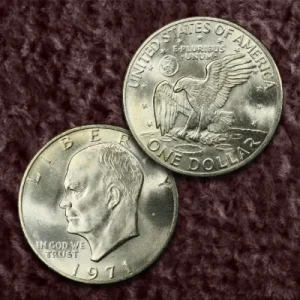
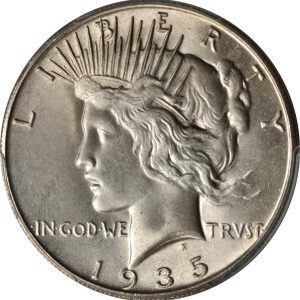
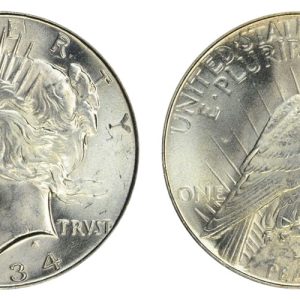
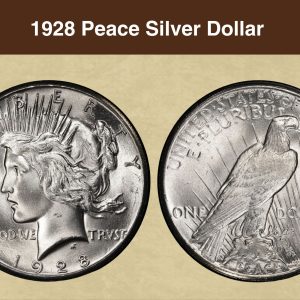
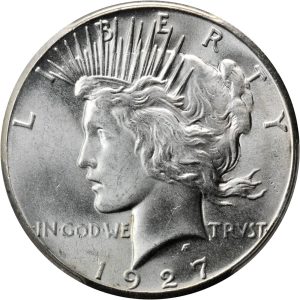
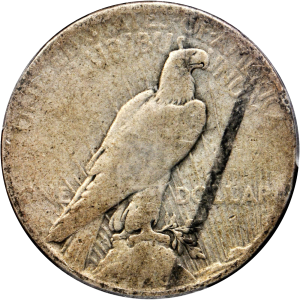
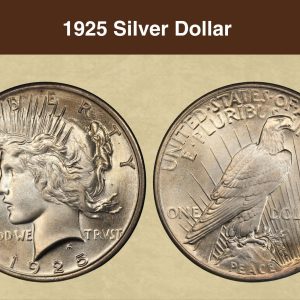
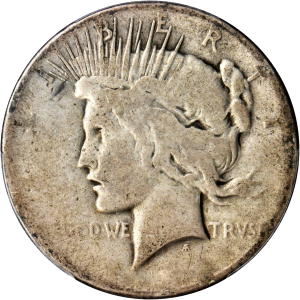
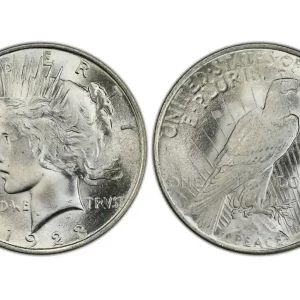
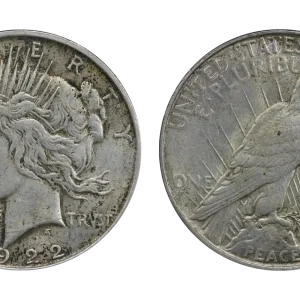
What makes a 1898 silver dollar rare?
A 1898 silver dollar is rare when it has the “S” (San Francisco) mint mark and is in a high grade, such as MS65 or higher, or if it has a rare error or variety. While the 1898-S Morgan is one of the scarcer 1898 dates due to its lower mintage, common 1898 coins are not particularly rare, especially in circulated condition.
How much is a 1898 O’Morgan Silver Dollar worth?
An 1898-O Morgan silver dollar’s value varies significantly based on its condition, ranging from around $48 to $63 for circulated coins to over $3,000 for high-grade, uncirculated examples. Factors like the mint mark (‘O’ for New Orleans), condition (grade), and any special features or varieties determine its final worth.
What are the rare errors on Morgan Silver Dollars?
Some of the most sought-after VAM varieties include the 1878-P 7/8 Tail Feathers, the 1879-P Reverse of 1878, and the 1887-P Doubled Ear. Clashed Dies : Clashed die errors occur when the obverse and reverse dies strike each other without a planchet in between, leaving impressions from one die on the other.
What makes a 1889 O silver dollar rare?
An 1889 Morgan silver dollar is rare primarily due to its low mintage numbers from the Carson City (CC) Mint. Only 350,000 were produced at the Carson City Mint, which was a much smaller operation than other U.S. mints. Combined with historical attrition, such as the melting of many coins, this low mintage makes the 1889-CC Morgan dollar exceptionally scarce, especially in high-grade condition.